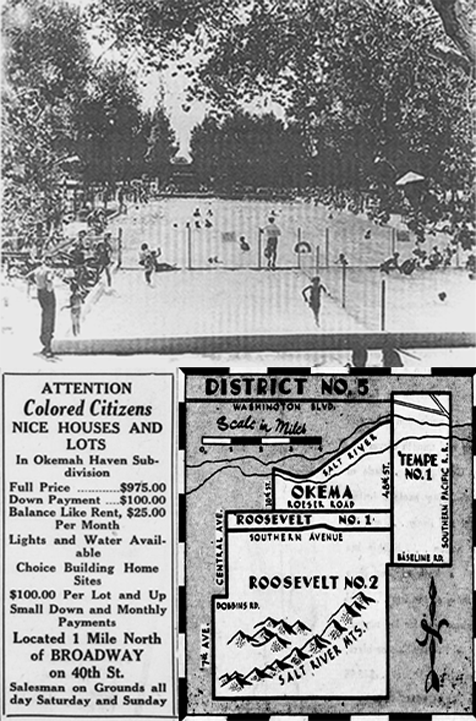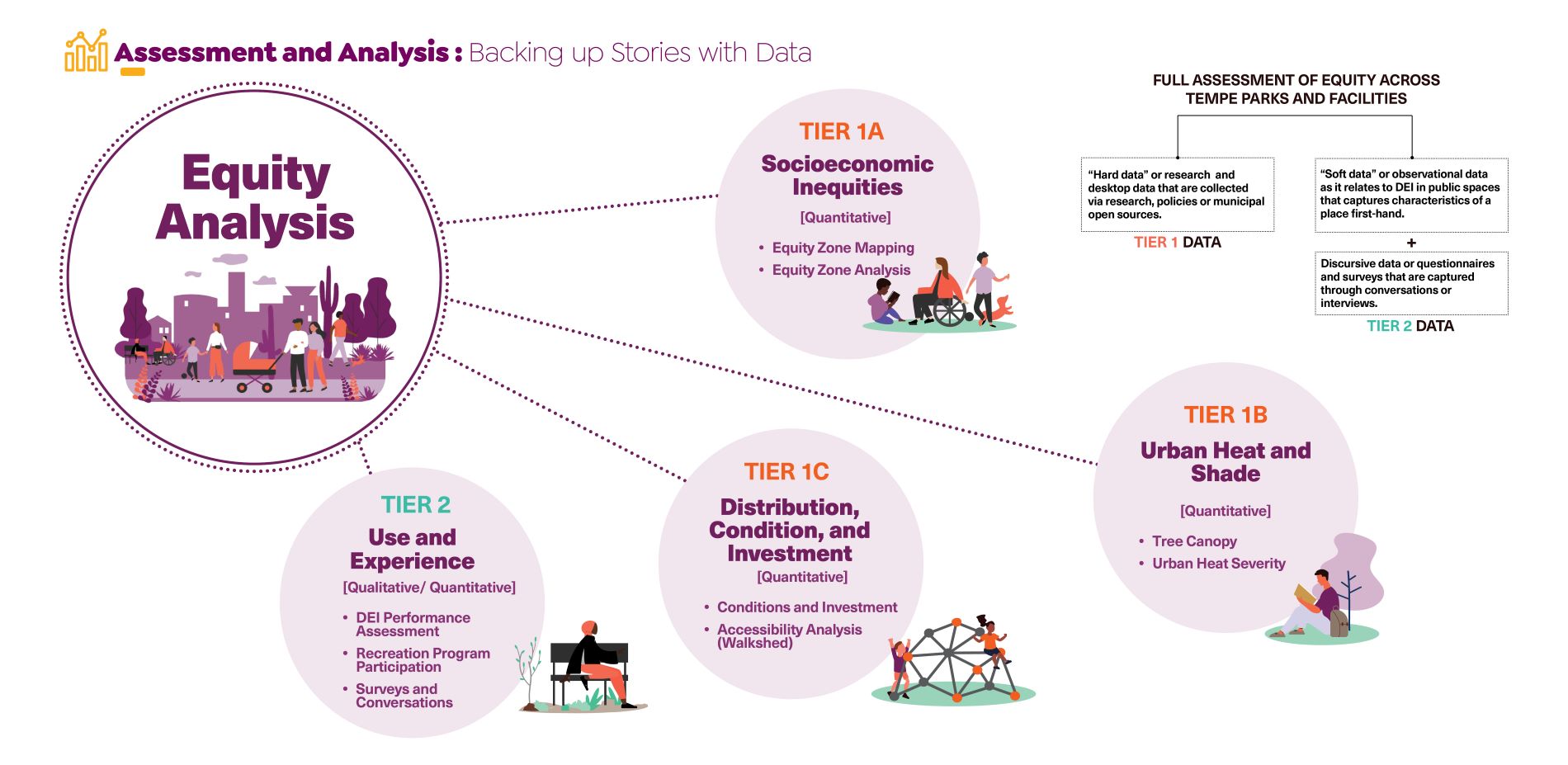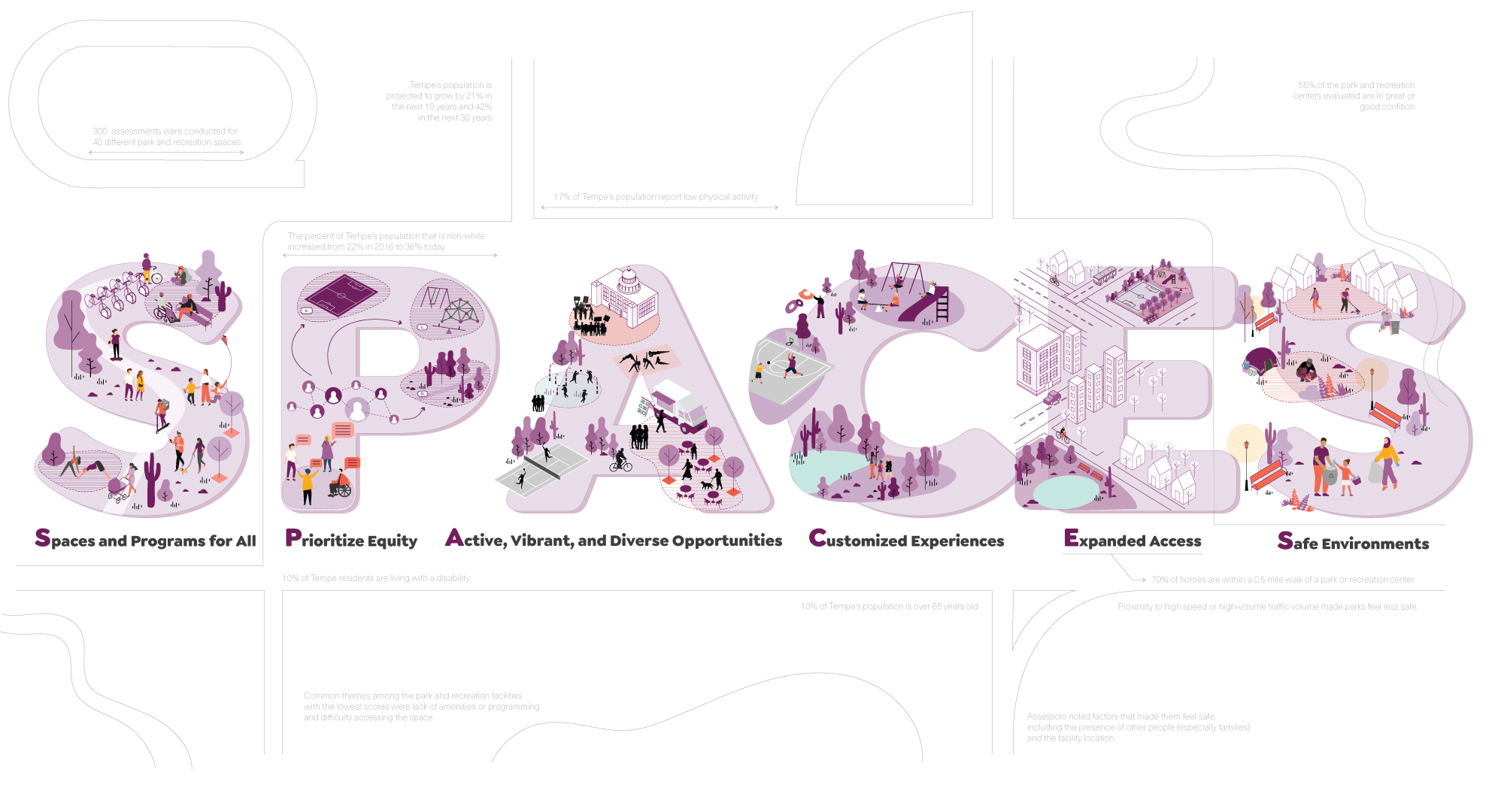
Traces of systemic exclusion throughout Tempe included predominately African American neighborhoods and segregation in public places.
Addressing Historic Discriminatory Practices in Public Spaces
Like other cities across the nation, many of Tempe’s public spaces were segregated in the 1900s, prohibiting people of color from accessing or utilizing park amenities, pools, and public facilities. Traces of racial and ethnic exclusion remain visible in the city today and have influenced feelings of solitude and lack of belonging. As the City of Tempe continues to grow and evolve, the Parks and Recreation department undertook an Equity Study to ensure it was providing the community with opportunities for recreation and access to green space in areas of the highest need.

Assessment and Analysis: Backing Up Stories With Data
Taking a Fresh Look with Both Quantitative and Qualitative Data
This study greatly improves current park planning which is limited to measuring parks per total population and geographic service areas. Instead, Design Workshop provides inventive measures of public space performance including quantifying feelings of safety, climate sanctuary, resiliency, and cultural representation.
The primary research methods involved a two-tier system:
1.
Desktop data analysis collected from publicly accessible sources measuring socio-economic disparity and environmental factors like heat island index as well as assessments around conditions, park distribution and investment trends.
2.
Unconventional observational assessments conducted through robust community engagement campaign that involved by navigator-led park assessments and park intercept surveys, measuring lived experiences and perceptions of use across the City.
Meeting the Community Where They Are
Gathering input from the community members was one of the most critical elements of the study. Feedback from a wide array of stakeholders — community members, youth, local leaders, arts staff and Tempe Parks and Recreation staff — on diversity, equity, and inclusion (DEI), program diversity, feelings of safety, and access to amenities within Tempe’s Park and Recreation system was gathered.
In total, the community engagement efforts included:
- 300 assessments of 40 different park and recreation spaces
- 10 neighborhood pop-up events with more than 2,000 attendees
- 4 focus groups
- 447 community surveys
- Dedicated youth engagement program gathering input from 167 youth
- 100+ Parks and Recreation staff interviews and surveys
- Virtual meetings

Spaces and Programs for All. Prioritize Equity. Active, Vibrant, Diverse Opportunitites. Customized Experiences. Expanded Access. Safe Environments.
Creating an Action Plan for the Future of Tempe Parks
Extensive data and research findings were translated into actionable next steps outlining key themes that emerged: Spaces and Programs for All; Prioritize Equity; Active, Vibrant, and Diverse Opportunities; Customized Experiences; Expanded Access; and Safe Environments (S.P.A.C.E.S.). Short and long-term recommendations allowed the Tempe Parks and Recreation department to immediately begin prioritizing funds for public space and programming improvements in focused neighborhoods.